Additional notes (click to expand)
Medicinal
Traditional Herbal Medicine Registration (THMR).
Medicinal uses
Uses supported by clinical data
Symptomatic treatment of mild and moderate depressive episodes (classifi
ed as F32.0 and F32.1, respectively, in the International statistical classifi
cation of diseases and related health problems, Tenth revision (ICD-10)
(18)) (19–31).
Uses reported in pharmacopoeias and in traditional systems
of medicine
Externally for the treatment of minor cuts, burns and skin ulcers (8, 32).
Topically for viral infections (33).
Uses described in folk medicine, not supported by experimental
or clinical data
As an antiphlogistic agent in the treatment of infl ammation of the bronchi
and urogenital tract; treatment of biliary disorders, bladder irritation, the
common cold, diabetes mellitus, dyspepsia, haemorrhoids, neuralgia, migraine
headaches, sciatica and ulcers (5, 8). Also used as a diuretic, an emmenagogue
and an antimalarial agent (5, 8
Contraindications
Herba Hyperici is contraindicated in cases of known allergy to plants of
the Clusiaceae family.
WHO monographs on medicinal plants commonly used in the Newly Independent States (NIS). 2010. WHO, Geneva
Other use
It is so named because it flowers around St John’s day (24 June), ‘wort’ is the early English word for a plant, and H. perforatum because of the translucent pores in the leaves. Coles wrote that these pores indicated that it was good for skin conditions. Lyte calls it Fugam Demonum which Fuchs explains arose from a superstitious belief that it could drive out demons. It was used as a diuretic, for bladder stone, inducing menstruation, for fevers, sciatica, burns, wounds and skin ulcers. Woodville wrote that ‘the ancients’ used it for hysteria, hypochondriasis and mania, but early herbals do not support this or that it was ever used for depression. By the beginning of the 19th century it had virtually fallen out of use, Lindley reporting only that it ‘has been used in gargles and lotions’. It is only licensed for use in ‘slightly low mood and mild anxiety’ and is now contraindicated in depression. Side effects include photosensitivity (even cows that eat it get sunburn) and enhancement of inactivation of warfarin, oral contraceptives, HIV treatments and
immunosuppressants, and a huge range of other medicines, by inducing drug metabolising enzymes in the liver. Tell your doctor if you are taking it...
Oakeley, Dr. Henry. (2011). A Year in the Medicinal Garden of the Royal College of Physicians, revised edition. Royal College of Physicians, London. p.59
link
Phytochemistry
Recently it has been used to treat mild depression, which it does because of its chemical constituents that include hypericin, hyperforin and flavinoids that inhibit Serotonin re-uptake. Its side effects include photosensitivity, inactivation of Warfarin, oral contraceptives, HIV treatments and immunosuppressants.
Oakeley, Dr. Henry. (2011). A Year in the Medicinal Garden of the Royal College of Physicians, revised edition. Royal College of Physicians, London.
link
Toxicity
Side effects/precautions: Hypersensitivity; do not take with known dermal photosensitivity or undergoing phototherapy or other photodiagnostic procedures; do not take with antidepressants (SSRI and triptan); can cause sun burn in fair-skinned persons; do not use with ciclosporin, aprenavir, indinavir and other protease inhibitors, irinotecan and warfarin (there are many contradictions – see leaflet); may lessen efficacy of oral contraceptives and cause intracyclic bleeding; may cause gastrointestinal disorders (inc. Dyspepsia, anorexia); allergic skin reactions; fatigue/restlessness; headaches; neuropathy; anxiety; dizziness; mania. (From Vitabiotics St John's Wort tablets, Patient Information Leaflet)
Medicines and Health Care Regulatory Authority, 2013 Licensed Traditional Herbal Remedies
Photosensitisation by hypericin.
Professor Anthony Dayan, 2021
Hypericum perforatum L.
Family: HYPERICACEAEGenus: Hypericum
Species: perforatum L.
Common names: Perforate St John's Wort
Pharmacopoeia Londinensis name: Hypericon
Distribution summary: N. Africa, Eurasia
Habit: Perennial
Hardiness: H5 - Hardy; cold winter
Habitat: Deciduous woods, scrub, hedgerows, calcareous woods
Garden status: Currently grown
Garden location: Europe & Middle East (J), Plane tree bed (P), Pharmacopoeia Londinensis 1618 'Flowers' (HSE 1)
Flowering months: May, June, July, August
Reason for growing: Medicinal, toxic, traditional herbal registration
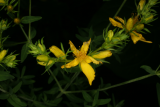

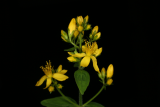
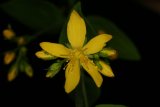
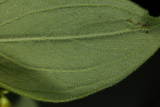

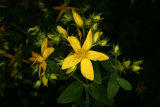
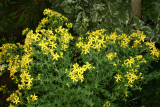
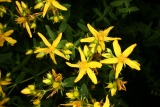
.JPG)

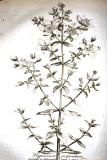

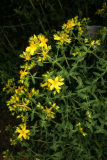
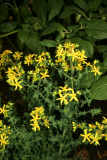


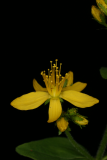
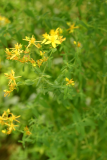
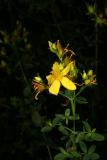
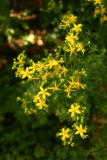
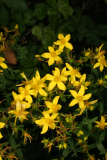
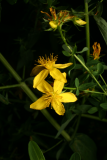
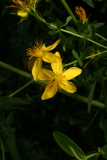
.JPG)
.JPG)